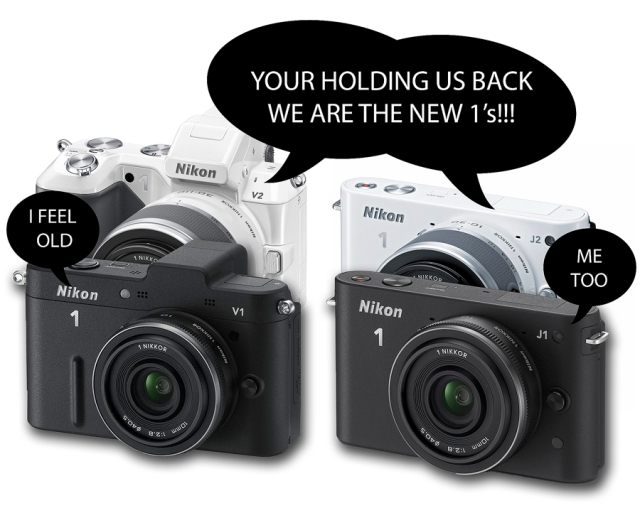The imaging industry in Australia is on the decline restructure. Gone are the boom times of rocketing camera sales and profitability. Times are tough for most retailers and this has been reflected in a number of job losses across the wholesale imaging industry.
Today I found out Olympus made 9 positions redundant across Australia. To my knowledge most of the redundancies happened over in the east coast of Australia with no job losses in the State of Western Australia. The positions made redundant varied from business managers, administration and a position within the accounts department.
Recently I saw a similar situation happened with Sony Australia where service technicians and account managers (to name a few) were also given their pink slips .
But it’s not all bad news for Olympus. Industry figures (recently released) showed the Olympus OM-D held a whopping 43% of market share for Digital SLR cameras in the month of December 2013. Historically Olympus have been very strong in their compact range but over the last couple of years sales figures have been in a downward spiral. I’m sure this would have played a part in the redundancies as the rise of smart phones has clearly dominated this category. However saying this the OM-D is certainly making up for the lack of sales in compacts. To this day I have never seen a camera sell as well – so I think Canon and Nikon should take a leaf out of Olympus’s book to see what they are doing right!
On top of the OM-D’s success its rumoured Olympus will be releasing an updated Digital SLR to replace their flagship E-5 camera . I can confirm Olympus’s marketing department is heading on a plane to Japan for ‘meetings’ this week, where I’m sure this rumoured camera will be discussed and revealed. So stay tuned.
For those who are reading this who have been made redundant I certainly know what it is like. Over one year ago I found myself in the same situation. My role as an Area Business Manager for Fujifilm Australia was no longer required as the company was transitioning itself into more streamlined practices. Online services seemed to be the way of the future and since November 3rd 2011 (the day I was made redundant *on my birthday*) Fujifilm Australia is believed to have made a total of nearly 50 redundancies (unconfirmed). As I have been in the industry for some time this was no surprise. Online accounting services and cloud computing have replaced the expensive employee and at the time of my redundancy my thoughts were reflected in Dave Marshall’s CEO statement to the press (via current.com) –
“By creating clever internet systems that incorporate such initiatives as sophisticated reordering websites, centralised systems, Facebook applications and virtual photo books, Fujifilm aims to provide innovative platforms that will offer new business opportunities for all of its customers.
“Fujifilm Australia has already proved very successful in developing and delivering cutting edge network solutions for its customers within the consumer imaging segment.
“Advanced plans are now underway within Fujifilm Australia to extend its network connectivity capabilities to the Graphic Systems and Medical Imaging Divisions.
“New business models that maximise this trend to ensure customers are at the forefront of new technology is a key focus for our business moving forward.
“In order to reinvent our processes and technology, this represents an opportunity to create a range of new specialist positions within Fujifilm Australia to drive a seamless transition for both consumers and customers.
“Unfortunately, as part of this process, it has also meant some changes to positions that have become redundant in the back office administration area due to technological advancements.
“There has also been a small number of positions that have been rationalised at the front end of the business to accommodate the specialist roles that are being created as part of the transition.
“Our goal is to strengthen Fujifilm’s position and ensure it is suitably equipped to balance current market demands with future business investment.
“Advancements in technology coupled with changes in consumer behaviour, has resulted in a significant transformation in the way businesses such as Fujifilm need to operate.”
So do I have any advice for employees who find themselves out of a job? Certainly! My advice – stay positive and hold no grudges. Look at it this way, being let go is possibly the best thing that could happen to you. It’s a new start, a new you. So don’t be complacent, use this time to reinvent yourself and do what you love. Start your own business or even become a consultant within your industry. For me I followed my love of social media and although I am still working a 9 to 5 I do plan on making this my gig in the distant future.
So based on Fujifilm, Olympus, Sony and Panasonic’s (2011) redundancies the big question looms….what about the big players like Nikon and Canon? When will they be cutting back?
Over the last couple of days I have been doing a bit of research on the subject and have found two hypotheticals which could lead to redundancies (please take my findings as speculation and rumour, not fact):
1) Canon Australia are advertising for a Salesforce Consultant.
I can see the move to Salesforce equating to job losses within Canon Australia in the next year. The reason I say this is because when I worked at Fujifilm I saw the same Salesforce rollout. It certainly is a powerful account management system and it does really replace the need to have extra account managers out in the field. Once the accounts are entered in the cloud they can be seen on any device from anywhere. Orders, leads, account history and delivery are all the vital information to an account manager. Salesforce easily combines a team of people reporting this information into a manageable feed which can be read by one person and acted upon. Need I say more?
2) The mirrorless camera situation for Canon and Nikon (Nikon especially) is serious.
Stock levels for the Nikon 1 J1 and Canon EOS M in their respective warehouses are said to be high. For Nikon this is quite alarming. The Nikon 1 J2 (announced August 9th 2012) and the anticipated Nikon V1 replacement (announced October 24th 2012) are simply premature for the market place. There is too much old stock (old models) sitting on retailers shelves. Something has got to give. Either the price has to be lowered and profits cut which in turn could affect jobs in the long-term.
Canon forecasters have anticipated their lack of sales by offering the slow-moving EOS M buyers a $150 cash back when they purchase their camera from an Australian retailer. I’m sure this will work in the short-term but it still early days. Over the next month you will see a huge marketing campaign from Canon to help their sell through across their range of products. I’m sure this is a one of their ways to cut their losses.
So in closing redundancies are never a nice thing. Unfortunately for industry they are a big part of life and for industry to evolve its a necessary thing. Over the next three years I can envision the imaging industry changing dramatically. The rise of connected smart phones and technology will certainly make the jobs within the imaging industry semi redundant if companies don’t act or embrace the technology.
I recently discussed the future of imaging over on F Stop Lounge which looks at some of the future technology and how it may play a part in the industry. No longer will industry be able to sit on their hands and wait for product to sell (fine example EOS M), employees and their associated marketing companies will have to be proactive in their marketing approach to reach a new audience that falls outside the traditional photographer. As the generations age and the technology evolves I see a new kind of photo being created and produced. One that will replace the photo industry and be more aligned with the Consumer Electronics Industry. I just hope that day doesn’t come too soon as I do like working in my industry…but hey we all have to live with change…good or bad.
Until Next Time – Happy Shooting.
























